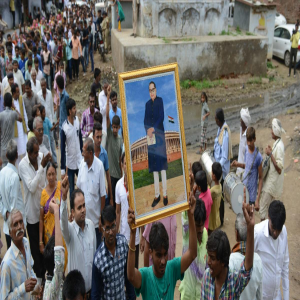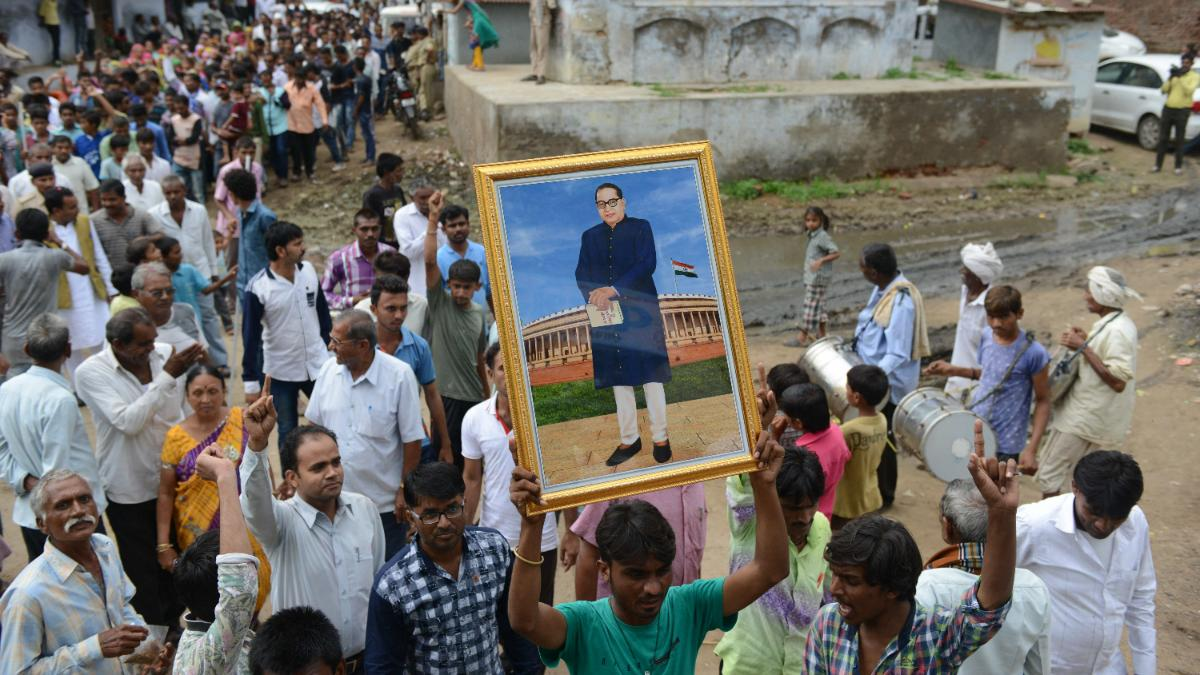

According to NCRB data, there are significant differences in the number of reported cases of atrocities against Dalits across Indian states for the year 2022. States such as Uttar Pradesh, Rajasthan, and Bihar have significantly higher instances of these crimes than Gujarat, Tamil Nadu, and Kerala. It takes a comprehensive analysis that goes beyond simple statistics to determine why some states report higher percentages of these atrocities while others show lower numbers. It explores the political, social, cultural, and historical influence that has shaped these realities.
It is imperative to first recognise the historical background. Dalits, historically marginalised and oppressed, have faced centuries of systemic discrimination rooted in the caste system. Dalits were the lowest class of people affected by this system of rigid hierarchies that separated society, leaving them vulnerable to violence, economic hardships, and social exclusion. The degrees to which modern concepts like democracy, equality, and human rights have permeated various Indian regions depend on their respective histories, the legacy of feudalism, and other factors. Nevertheless, the severity and forms of this discrimination differ significantly amongst these regions.
Caste dynamics are deeply ingrained in Uttar Pradesh, the state that tops the list with 15,368 reported cases. In the state's long-standing caste-based feudal systems, upper-caste landlords have always had control over resources and land, while Dalits have been forced to work as landless labourers. Caste-based violence has persisted as a result of this power dynamic frequently, as a way for the upper castes to establish their dominance. Despite the state's sizable Dalit population, which could have translated into political power, caste-based politics has frequently splintered the community, reducing collective bargaining power and making it vulnerable to violence.
Rajasthan offers a somewhat similar situation with 8,752 cases. Rigid caste hierarchies have long existed in the state, especially in the rural areas where caste plays a significant role in defining social roles and traditional occupations. Here, Dalits are frequently the targets of communal as well as individual violence; reports of collective punishment are made in response to social norm challenges or rights assertions. The high frequency of atrocities is partly due to the persistence of these feudal attitudes in spite of contemporary legal frameworks.
With 7,733 and 6,509 cases, respectively, Madhya Pradesh and Bihar also exhibit entrenched caste systems. In these states, upper castes frequently control the land and resources, and Dalits are mainly restricted to low-wage, menial jobs. Violence often follows any attempt by Dalits to reject these roles or assert their legal rights. A lack of education and economic empowerment makes them even more vulnerable.
States like Kerala, Tamil Nadu, and Gujarat, on the other hand, record comparatively fewer incidents of atrocities against Dalits. This is not to say that caste discrimination does not exist in these states; rather, the types and degrees of discrimination vary. With 1,279 cases, Gujarat has witnessed major Dalit movements that have contested the status quo, especially in urban areas where there are more economic opportunities outside of traditional caste occupations. Though less frequently than in states like Rajasthan or Uttar Pradesh, caste-based violence is still reported in rural areas.
With 1,761 cases, Tamil Nadu offers a singular example of a state with strong caste identities. However, the state has also seen strong anti-caste movements, like the Dravidian movement, which aimed to overthrow Brahminical dominance. Dalits are now more politically and socially conscious, which lessens their vulnerability to overt violence. But rather than being expressed directly through violence, caste-based discrimination still exists, usually in more covert or systemic forms like social or economic exclusion.
Kerala has 1,050 cases and is frequently cited as an example state with comparatively better Dalit social indicators. In contrast to other states, the state boasts a more egalitarian society due to its history of social reform movements, higher literacy rates, and higher rates of political participation. This does not, however, imply that caste-based discrimination does not exist. In Kerala, discrimination frequently goes unnoticed and takes the form of social exclusion or economic marginalisation, for example.
The discrepancy in the number of cases reported can also be ascribed to variations in the channels for reporting, the function of civil society, and the political inclination of state governments to tackle these matters. There is frequently a greater awareness of and willingness to report atrocities in states with active Dalit movements and civil society organisations. Conversely, a lot of cases might go unreported in states where Dalits are more marginalised or where the government apparatus is less responsive. Furthermore, state-by-state variations exist in the efficiency of the legal system in dealing with these offences. Underreporting of crimes may occur in some states as a result of sluggish legal systems and low conviction rates discouraging victims from seeking justice.
Another important factor is the political environment. It is possible that more attempts are made to address Dalits' complaints in states where they have a sizable political representation—at least verbally, if not always practically. But in states where Dalits are politically marginalised, the state apparatus might not be paying enough attention to their problems, which could result in either a higher rate of violence or underreporting.
This discrepancy is also influenced by economic factors. Dalits tend to be less vulnerable to violence in states where they have access to economic and educational opportunities. Dalits now have more opportunities to reject exploitation and leave traditional caste-based jobs, thanks to economic empowerment. But in those states where Dalits are still economically disadvantaged, they are more vulnerable to violence and exploitation because of their reliance on upper-caste landowners or employers.
Cultural influences also cannot be disregarded. The perpetuation of caste-based customs and beliefs, particularly in rural regions, feeds into the prejudice and violence directed towards Dalits. Any attempt by Dalits to stand up for their rights or question social norms is met with hostility in many places. The lack of knowledge and understanding about the legal and human rights frameworks that forbid caste-based discrimination among Dalits and upper-caste communities frequently exacerbates this cultural resistance to change.
In conclusion, the variations in the number of atrocity cases against Dalits that have been reported throughout India's various states are a result of the intricate interactions between political, social, historical, and cultural elements. States that report higher rates of violence are typically those with entrenched caste hierarchies, economic marginalisation of Dalits, a weak civil society, and a lack of political will to address these issues.
On the other hand, states with more equal social structures, vibrant civil society organisations, and increased Dalit political and economic empowerment typically report fewer cases. It is important to understand that lower numbers do not always imply the absence of discrimination; rather, they could represent other types of marginalisation that are less obvious or more difficult to measure. The challenge is to address the underlying causes of caste-based violence and discrimination in all states in order to guarantee that Dalits everywhere can live in security and dignity.